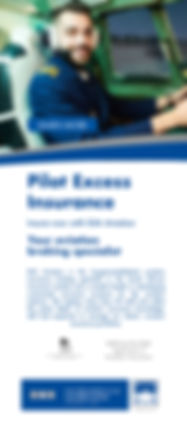I am well aware that I am preaching to the converted here but this article is meant to be informative so pilots can know of the dangers posed by irresponsible laser use.

It is widely agreed that there are two potential hazards to pilots from laser light visual interference and eye effects or injuries.
The primary hazard is visible-light lasers aimed at aircraft that results in “visual interference” with pilot performance, during critical phases of flight such as take-off, landing, emergency manoeuvres, and low-altitude flight (helicopters).

Fortunately, it is unlikely that exposure to the light alone could cause an accident. In over the 55,000 reported laser illuminations worldwide from 2004 to 2018 there have not been any accidents..... YET. However experts are concerned that bright light occurring at the wrong time — such as during an emergency, or when there is another problem for pilots to deal with — could be the proverbial “straw that breaks the camel’s back.”

The secondary hazard is the potential for a laser to cause eye effects or injuries to pilots or anyone on-board looking out a window towards strong laser light. There have been documented eye effects such as watering eyes; these occur in less than 1% of reported laser illuminations of aircraft.
However, pilot exposure in flight to laser light is highly unlikely to result in significant or permanent eye injury. In fact there have been no documented or proven cases of permanent eye injury to pilots, according to aviation agencies such as the U.S. FAA, U.K. CAA, and Transport Canada.

Generally lasers sold for pointing uses should not exceed 5 mW but unfortunately this rule is not being adhered to and very powerful lasers are freely available.
5mW lasers although relativity weak still pose a threat they are a potential eye hazard to about 52 feet and a temporary flash-blindness hazard out to about 260 feet. They cause glare and is a disruption hazard from about 260 feet to about 1,200 feet. It is a distraction hazard
to over 3 kilometers (10,000 feet). The distraction can be dangerous during a critical phase of flight, such as take-offs and landings. Note that this is not truly “visual” interference, since a pilot can see despite the light. Instead, it is a mental distraction, interfering with the pilot’s attention. This can be overcome if a pilot is aware of laser hazards, and how to react to them.

The laser’s light is not truly safe until it is indistinguishable from background lights on the ground. A pilot may notice a flashing dot of light, but it should not be enough to cause a distraction. (This does not mean that anyone should aim a 5 mW laser at a plane if it is over 3 km away. For one thing, it is very difficult to gauge aircraft distances at night. Even more important, there simply is no reason to aim a laser at an aircraft except in an emergency situation such as a night rescue in a remote area rescue.
A 125 milliwatt laser is a distraction 18 km away more powerful lasers are hazardous at greater distances. The hazard distance increases as the square root of the power increase.
Here is a photo showing how a 1 milliwatt laser is visible at a distance of 20 kilometers across Tokyo.

Although the laser’s irradiance is below the FAA distraction limit of 50 nanowatts per sq. cm. -- it is approximately as bright as other city lights -- you can see that the light is still visible.
Guys be safe out there and expect the unexpected unfortunately people on the ground are generally ignorant to the potential harm they can cause by shining a laser at an aircraft.






















